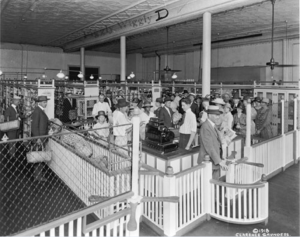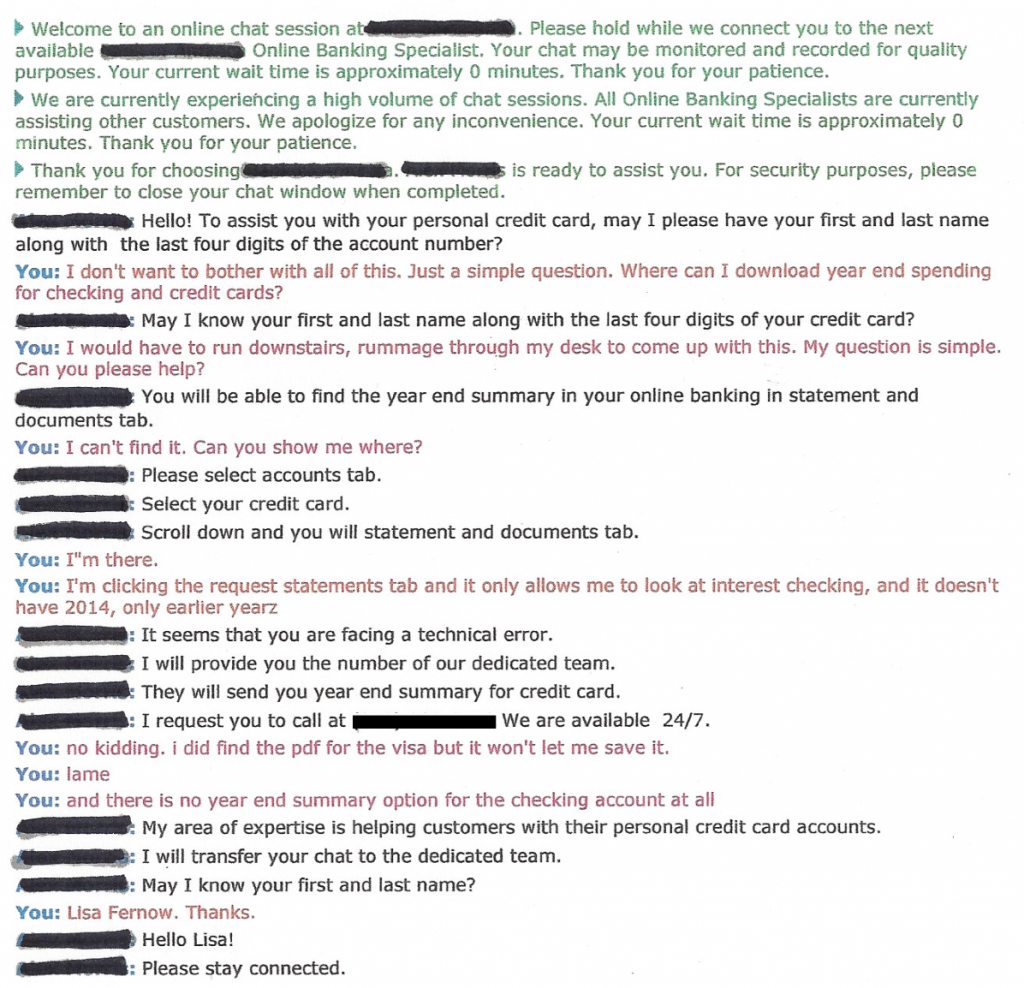If so, your customers are probably frustrated.
In 1916, enterprising businessman Clarence Saunders founded the first self-service grocery store in Memphis, Tennessee. Called Piggly Wiggly (for reasons Saunders would never explain), the grocery store featured open shelves where shoppers could actually select the goods they wanted, place them in a basket and take them to the checkout stand. The US Patent Office awarded Saunders a patent for a “self-serving store” in 1917.

(Source: ITIF)
Self service is not a new concept. Coin operated cafeterias like the Automat first opened in the US in 1902. Today we have direct dial telephones, elevators without human operators, self-service gasoline pumps, ATMs, grocery self checkout, airline kiosks, vending machines, E-learning, E-commerce, you name it.
You’d think there was nothing left to reinvent.
And yet web self-service has snuck up on us
A few years ago I had such a tragically funny online customer experience that I captured the live chat transcript in a screen grab:
Poor customer service rep. All I wanted was to find out where I could download my end of year statement.

(Source: Amazon.com)
In the best-selling book, The Effortless Experience, authors Matthew Dixon, Nick Toman and Rick Delisi of CEB lay out the case for making customer experiences effortless and document the rise of web self service. They surveyed consumers and business customers about their support channel preferences and discovered that these groups see just as much value in self service as they do in phone interactions. In one 2013 study, only 29% of customers said they primarily relied on the phone for service, a 38-point drop in just five years. Yet only 16% of service leaders surveyed realize the shift to web self service has occurred. And a whopping 34% think it’s more than five years out.
What’s going on?
From the service leaders’ point of view, call volume hasn’t actually declined much, so it is natural to assume people are calling because they want to. After all they have a choice. But it turns out nearly 58% of phone callers started on the web. Of those, a significant percent couldn’t find the answer they needed, or the answer was unclear. They called because they had to.
And when companies measure individual support interactions, it looks like they’re doing a good job. But when the authors considered the experience from the point of view of the companies’ customers they found customers were frustrated at having to channel switch from web to phone to solve their problems.
In the authors’ conversations with service leaders they also encountered several “hardwired” assumptions that proved to be false:
- Customers only want to self-serve for easy issues
- Only the millennial generation prefers self-service
- It costs a lot of money to improve self-service
So web self service has snuck up on us. The opportunity now is for us to make it as easy as possible.
This year I had the pleasure of consulting for AnswerDash, whose technology empowers website visitors to self-serve answers to questions without leaving the page or typing in a search term so they can quickly get on with whatever job they came online to accomplish. AnswerDash’s dynamic Q&A engine presents the most popular and relevant Q&A, and even uncovers new questions companies should be answering.
The benefit to consumers is a more efficient, less frustrating web self service experience. The benefit to companies is they save a lot of money on customer support while actually enhancing customer loyalty.
The Information Technology & Innovation Foundation predicts the impact of self service will be profound.
“Over at least the next decade, self-service technology has the potential to be a major force for growth in productivity and improvements in quality of life.”
So whatever your industry, look for opportunities to improve self service, and web self service in particular.
I can’t wait for my bank to get the memo.
3 innovation lessons from looking at the self-service trend:
- Look outside your industry, and back in time, to see the really big macro trends
- Challenge your assumptions, repeatedly, to avoid being blindsided
- Ask your customers about their end-to-end experience to uncover opportunities that would otherwise go unnoticed
What innovations have inspired you lately?
This post was originally published by the Marketing Executive Network Group.

